The 25th Japan Media Arts Festival Award-winning Works Exhibition was held from Friday, September 16 to Monday, September 26, 2022. During this period, related events including talk sessions and workshops took place. The talk session on the Grand Prize-winning entry in the Art Division, Sun and Moon Room, was webcast on the festival’s official website. The session was attended by FUJIOKA Sadam (representative of anno lab/media artist) who was awarded the Grand Prize for Sun and Moon Room, and MATOBA Hiroshi (freelance programmer and artist), and was moderated by TASAKA Hiroko (curator of the Tokyo Photographic Art Museum/a member of the Art Division Jury). This article reports on the session.
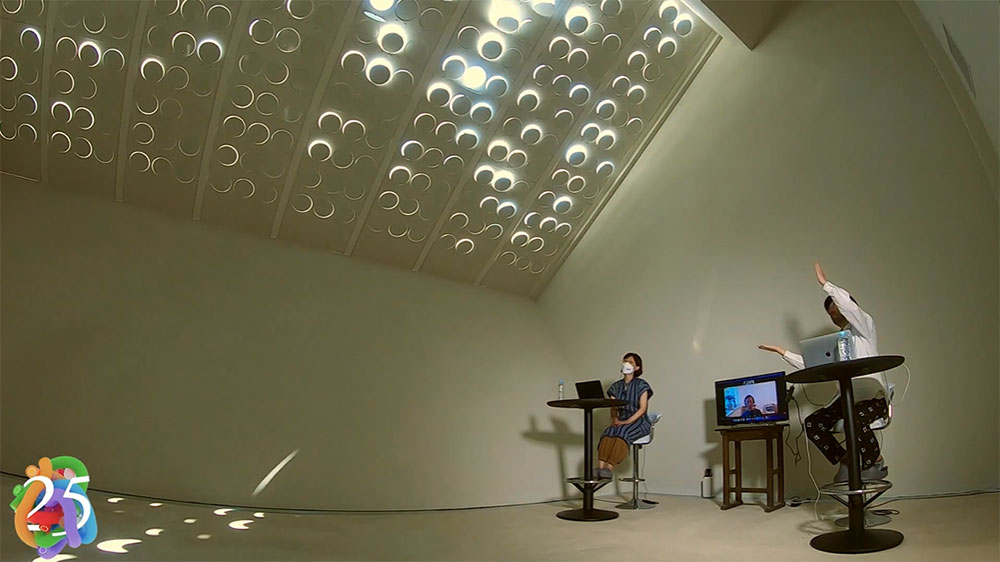
Sun and Moon Room is an interactive artwork in which multiple small windows on the south-facing ceiling open and close with a unique lighting program, allowing sunlight to trace the viewer’s feet. As the word “room” in the title suggests, this work is permanently installed as a room in the Art Museum of Nature and Human Non-Homogeneity, located in the plaza of a resort campground in Nagasakibana, a small cape located in the north of Kunisaki Peninsula in northeastern Oita Prefecture. For this reason, the exhibition of award-winning works was to include a variety of materials, including architectural models and a video interview with the artists. This talk session was held at the museum site. TASAKA Hiroko, who experienced the work, said, “It was as if an unknown animal existed.”
FUJIOKA Sadam heads up anno lab, an organization with the ambition of “creating the most fun town in the world” through experiencing design. Based in Fukuoka, the organization’s main activities are centered on the installation in cultural facilities of interactive content. MATOBA Hiroshi, who participated in the talk online, is involved in the project as a programmer and is a junior colleague of FUJIOKA, having graduated from the same university. Many of the members involved in this project, including FUJIOKA and MATOBA, are graduates of Kyushu University’s Department of Design. They say their studies at their alma mater are the driving force behind thinking and activities that form the basis of their work.
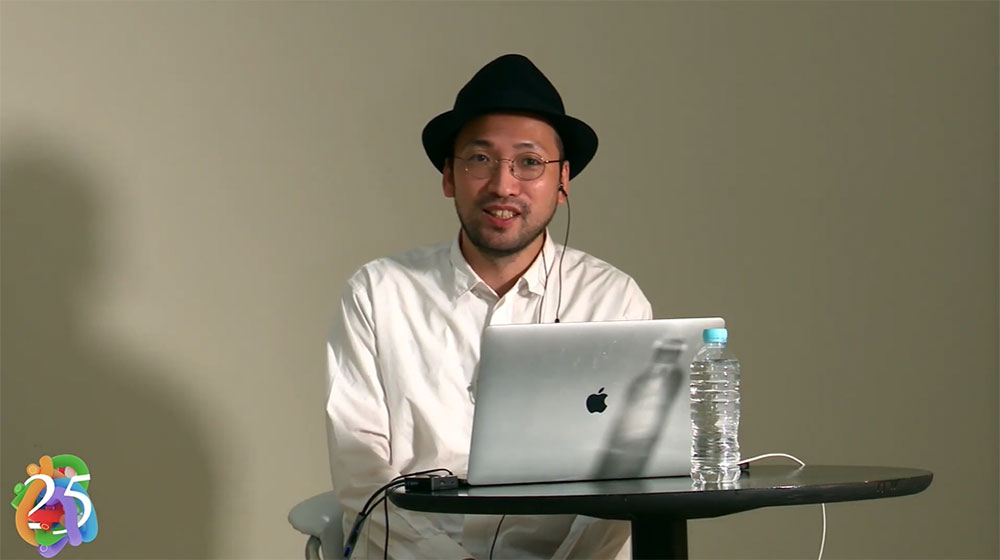
FUJIOKA also emphasized the importance of “experience” throughout his talk. He said that everything that anno lab does, including this work, video content, recipe book design, and community design, consistently emphasizes “experience” and is not so much concerned with creating works of art. Designing experiences into a more natural state may enrich the experiences, he says. “Work, child-rearing, and studying are all supposed to be fun and happy. If we feel pain, it means that the experience is not well designed. I think one of our roles is to bring it back to its natural state,” he added.
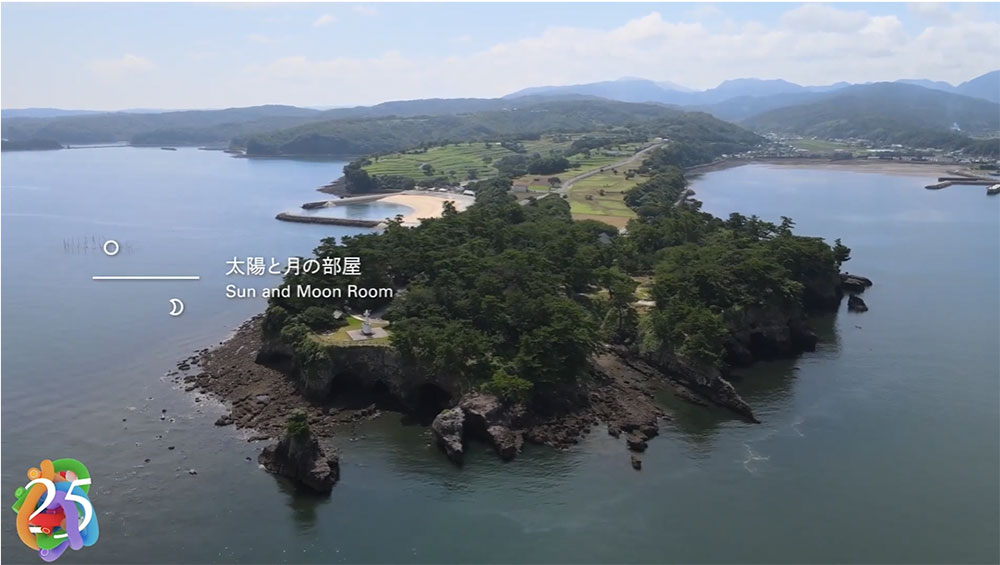
The impetus for the creation of this work came from an open call for digital artwork to be installed at this location. At that time, however, the building itself was not yet completed, and the Art Museum of Nature and Human Non-Homogeneity, which encompasses this work, was also completed together with this work, and anno lab had a great deal to do with the name and concept of the museum as a whole.
Before starting work on the project, FUJIOKA said he first stayed in the area with his team members. “We experienced many things that can be experienced in this environment while camping and barbecuing. One of the things that particularly impressed me was that the sun rises from the horizon and sets on the horizon. This is something unique to the peninsula that juts out to the north (or south), and this kind of environment is said to be rare in Japan. If we were to install our work here, we wanted it to be a work of art that would not be completed indoors but would incorporate the magnificent nature. I wanted to create an experience similar to that of being in touch with nature, rather than being in touch with technology,” says FUJIOKA.
MATOBA, on the other hand, says, “I was living in Berlin at the time, in an apartment where the morning the sun shone through the window and the evening sun shone through the door on the opposite side. I was curious about when the sunlight would come into my apartment room, and I created simulation software to find out. Everyone knows that the sun rises in the east and sets in the west, but when you look at the sun from your subjective point of view, the relationship to the sun varies depending on the direction you face. I was getting a fresh perspective on such things.” He had been warming up to the input that would lead to this work for some time. MATOBA has not yet experienced this work, as he has consistently participated remotely from Berlin since the production stage until the day this talk session was held. We have learned that several other team members had not yet experienced this work, which made us imagine the work’s production period coinciding with the COVID-19 pandemic.
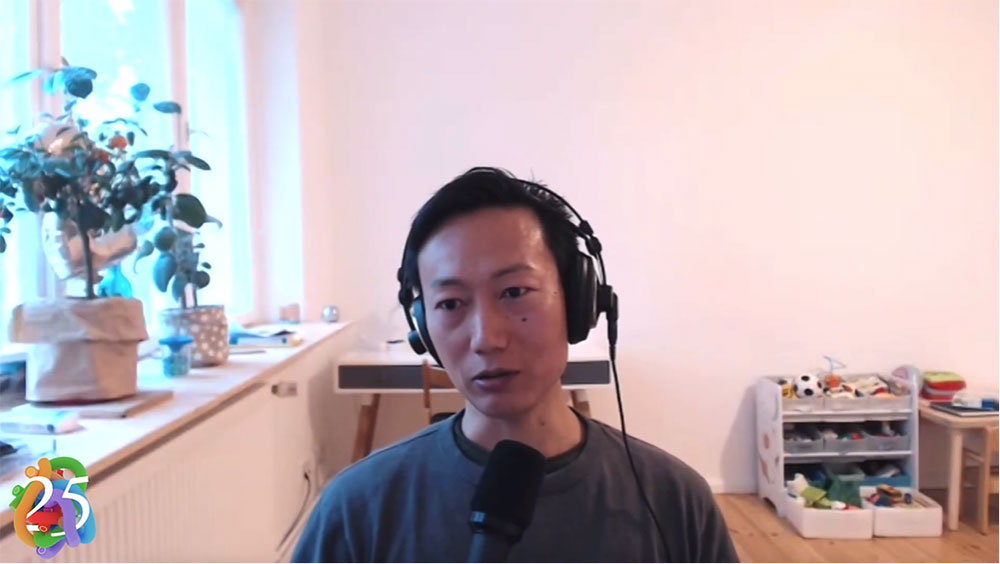

TASAKA, who served as a juror for the Art Division, gave her reasons for awarding the prize to this work, citing a sense of romanticism and story in the way it carefully follows the transition of nature, which is difficult to experience on a daily basis, and the way it stands beautifully as a device for experiencing nature despite the use of technology. “While digital and online technologies have been the focus of attention in the wake of the COVID-19 pandemic, there is a growing awareness of returning to nature. It was in this vein that I was attracted to this work. I also see today’s value in the collective team production style,” she added. MATOBA said, “I am glad to see the deep understanding of this work from the reasons for the award. Art and technology are seen as two separate things, but I personally, and as a team like to see them as one in etymology, and as something that was originally closely connected. I was conscious of expanding the possibilities of expression through technology during the production process.” FUJIOKA added, “I think that the awareness of experiencing nature at a higher resolution through a lens of technology has eventually led to an arrangement that made the presence of technology imperceptible.”
In the process of planning the work, FUJIOKA and MATOBA said that they researched works by James Turrell1 and Olafur Eliasson,2 as well as Rain Room by Random International3 but the experience of permanently installing a work as part of a building is not something that comes along often, and was a rare opportunity. The most important aspect of this work is its relationship with sunlight. From the summer to winter solstices, the building was designed to find the best angle to allow visitors to experience the work year-round. The museum’s design direction as a whole was also set around this work. Its name, “Art Museum of Nature and Human Non-Homogeneity,” was also conceived by FUJIOKA and his team.

Regarding the impressive word “non-homogeneity,” TASAKA said, “I feel that it expresses resistance to the homogenization of today’s society, which has become accustomed to digital technology. It is a word that makes the recipients feel uncomfortable.” “Non-homogeneity” is a word that they have been aware of for some time. MATOBA introduced an episode related to this word, “One time, I felt uncomfortable with the homogeneous light of a PC display, so I took it apart and replaced the backlight with an incandescent lamp, and the unevenness of the light and darkness made the digital information look somehow natural.” The word “non-homogeneity” expresses the concept of experiencing nature by moving away from the homogeneous state of modern technology. “The city of Bungotakada has a deep knowledge of art. When I proposed this somewhat challenging name, they readily accepted it, which made me very happy. The museum is located in a campground, and many families visit. Children might ask what it means, since the word is not used in everyday life. We hope that the museum and the artwork will be an entry point for people to think together about the museum’s non-homogeneity,” said FUJIOKA. He added that the word “people,” which was not included in the original conception, was added because he wanted to emphasize the importance of an interactive experience in which artworks are realized only through the intervention of people, and also because he was aware that people are also part of nature.
In addition, he introduced the background of this work, explaining why “moon” is included in its name, even though sunlight is the only light that enters the work. FUJIOKA explains, “The name of the work was decided from the beginning, and I originally intended to capture the light of both the sun and the moon. But in reality, the museum is only open during the daytime, so we could only open it to the public during the sunlight hours. But when I looked at the sunlight simulation, I saw a crescent moon at the end of the light coming through the small window. In the first place, the moon is reflected by sunlight, so it matched the original way it should be,” expressing his joy at the coincidence of the unexpected event and the coincidence of the name and the work. The shape of the sunlight shining in looks like a crescent moon, depending on the opening of the small window and the angle of incidence of the light.
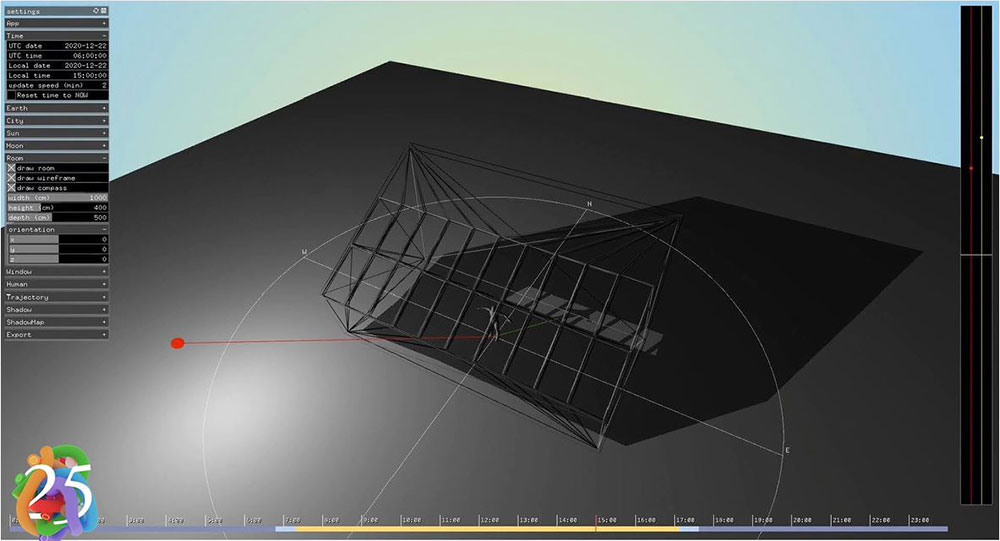
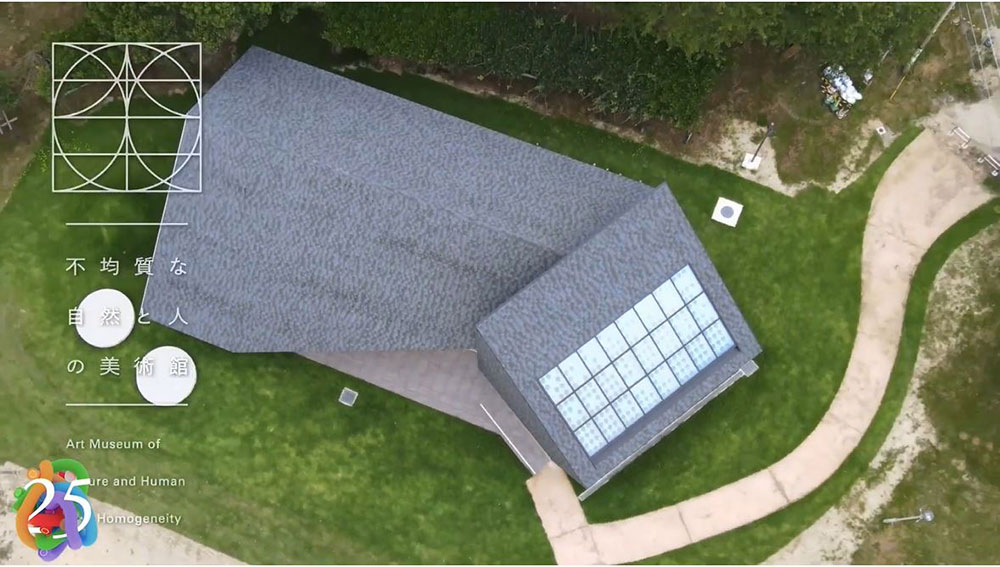
UJIOKA and MATOBA say that their daily lives have changed as a result of working on this project. FUJIOKA says he has come to realize that sunlight is considered to be everywhere, including houses, temples and shrines, and in environmental design. “At Usa Jingu shrine, which I visited yesterday, the approach to the shrine is straight and faces south, and at noon the torii gate is lit from the front. The stairs leading up to the shrine were designed to be always in the shade due to the surrounding plants. Through this work, a kind of resolution to capture sunlight has increased, and I have become more aware of it. The way I see the world has changed.” He added, “Nowadays, we have a fixed rhythm of life based on time, such as an eight-hour workday, but if the work had begun at sunrise and ended at sunset in the olden days, then the working hours would change from summer to winter. I began to think that this was more natural and perhaps better suited to human biorhythms.” He also said it was interesting that his interest led him to rethink the familiar rhythm of his life.
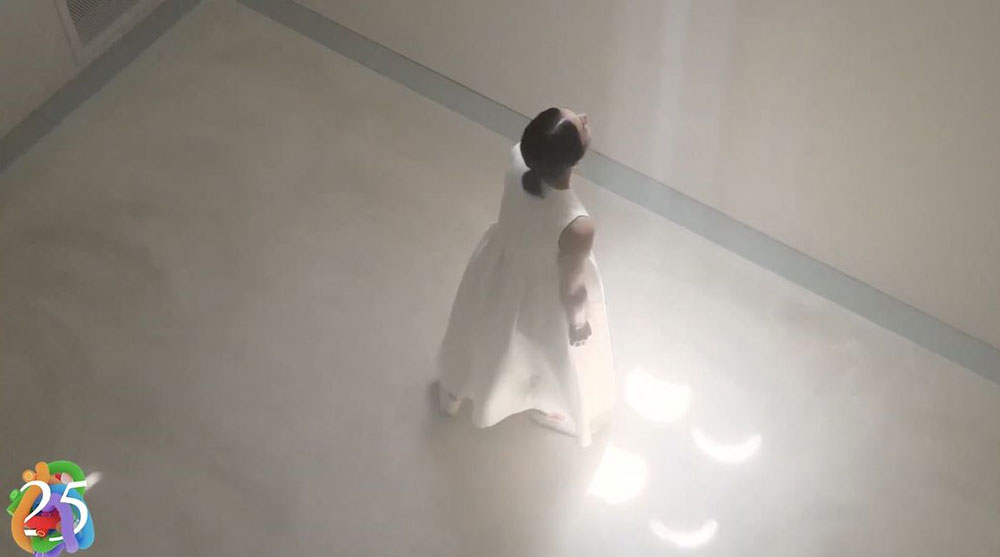
In addition to this work, the museum has several other permanently installed works. Some can be experienced differently depending on the lunar cycle and weather conditions. “This work, too, is not yet open to the public, but on nights with a full moon, you can experience it by moonlight. We hope to create opportunities to see it someday by planning events such as opening the museum at night,” says FUJIOKA, who is looking forward to long-term involvement with the museum. He also expressed his desire to collaborate with scientists and other experts in other fields. He is also considering developing variations of the same series. FUJIOKA and MATOBA said, “Different countries and regions have different latitudes and longitudes. So, countless variations can be created for each location. It might be interesting to create a work in which a window on the side of a passageway opens and closes to illuminate the feet of passers-by, or with only one window on the ceiling. If we are talking about a device to experience the solar cycle, it might be possible to incorporate it into a bracelet-type device.” Ideas continued to develop during the talk session. We look forward to more rich experiences from them in the future based on the themes of “non-homogeneity” and “nature.”
notes
information
The 25th Japan Media Arts Festival
Talk Session on the Art Division Grand Prize-winning Sun and Moon Room
Video available at: https://j-mediaarts.jp/en/festival/talk-session/
Speakers:
FUJIOKA Sadam (Representative of anno lab/Media artist/Art Division/Grand Prize Sun and Moon Room)
MATOBA Hiroshi (Freelance programmer and artist/Art Division/Grand Prize Sun and Moon Room)
TASAKA Hiroko (Curator of the Tokyo Photographic Art Museum/Art Division jury)
Organizer: The 25th Japan Media Arts Festival Executive Committee
https://j-mediaarts.jp/en/
*URL links were confirmed on Decemver 16, 2022.